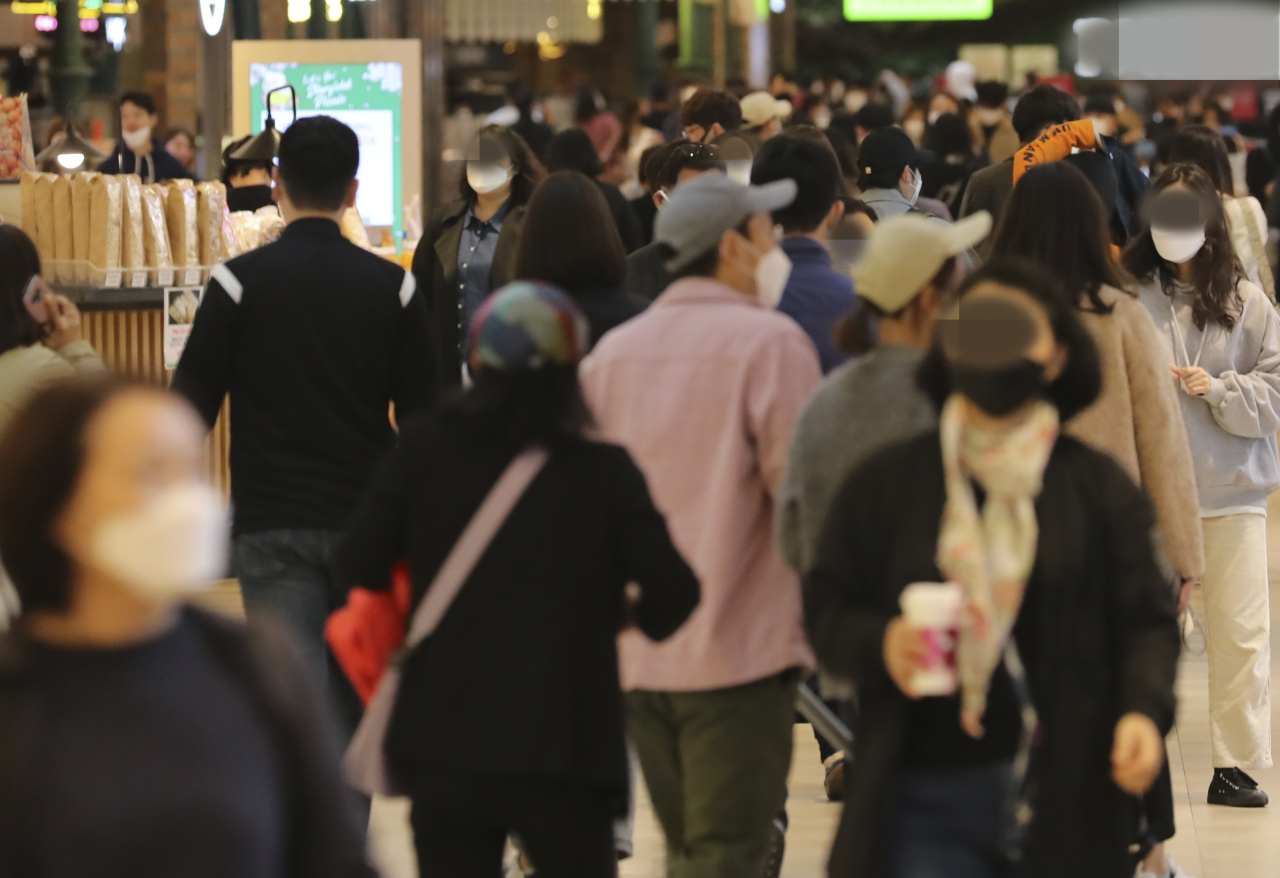[News Focus] Hopes for normal life rise as South Korea begins COVID-19 exit
Students to return to classrooms in phases, starting next Wednesday
By Ock Hyun-juPublished : May 4, 2020 - 16:12

Schools are getting ready to welcome back students. Public museums and libraries are preparing to reopen and professional baseball and soccer leagues will kick off their long delayed new season this week.
Life is South Korea is getting back to normal, as the country’s fight against COVID-19 enters a new phase with a marked slowdown in new cases.
“Our war against the coronavirus has yet to end and it will not in the short term,” Prime Minister Chung Sye-kyun said at meeting with top officials on virus responses on Monday.
“Now we have to accept life with the coronavirus. We are facing the task of making a new life with this persistent threat of the virus.”
On Wednesday, Korea, which reported the first COVID-19 case on Jan. 20, will introduce a new regime in its fight against COVID-19 called “routine distancing.”
A way of balancing normal daily life with quarantine efforts, the relaxation from the more rigorous social distancing comes as daily new cases have been hovering around 10 for more than two weeks, with most of the infections coming from overseas.
Schools will reopen in phases in the coming weeks, starting with third-year high school students on May 13, the Education Ministry announced Monday. The country’s spring semester already began entirely with online classes in April, with schools physically remaining shut for more than two months.
On May 20, second-year high school students and third-year middle school students will go back to school. On May 27, students in their first year at high schools and in second year at middle schools and in third and fourth year at elementary schools will return to school. Schools will reopen for the rest on June 1. Kindergartens will open on May 20.
Rallies, large gatherings and events will be allowed as long as quarantine measures are taken.
Public facilities such as social welfare centers, national parks, indoor sports facilities, stadiums, theaters, libraries, museums and galleries will also reopen in phases.
A nationwide social distancing campaign was put in place on March 22 in Korea, with signs of the coronavirus spreading beyond Daegu, which was once the country’s epicenter of the virus outbreak.
Instead of imposing a lockdown or banning operation of businesses, the government appealed to the public for sticking to the social distancing guidelines -- staying indoors as much as possible -- and tightened restrictions on potential hotspots for the virus -- religious gatherings, indoor sports facilities and entertainment establishments.
The social distancing campaign, which was scheduled to last for two weeks, was extended till May 5 mindful of the country’s April 15 parliamentary elections and a busy holiday calendar packed with Buddha’s Birthday, Labor Day and Children’s Day stretching from April 30 to Tuesday.
Despite concerns that the increased movement of people and physical contact could lead to a spike in new infections, there were no cases linked to the elections.
Due in large part to the rigorous social distancing campaign, Korea, which reached a peak on Feb. 29 with 909 new cases, had managed to flatten the virus curve. It reported eight new cases Monday, bringing the total number of infections to 10,801. Some 9,217 people were released from quarantine, putting the recovery rate at 85.3 percent.
There were two conditions that had to be met for the country to switch to routine distancing: The country had to have fewer than 50 new infections per day, and the sources of infection had to be traceable in at least 95 percent of cases.
The conditions have been met.
Now, Korea seeks to build a post-coronavirus new normal where each individual is responsible for taking quarantine measures in their daily lives to minimize the risk of infection, which the government labeled as “everyday life quarantine” scheme.
The routine distancing guidelines detail how citizens should behave in specific places and situations to prevent the spread of the coronavirus -- from workplaces and public transportation to hotels and shopping malls.
Common rules include: taking three to four days off from work when people don’t feel well, refraining from going outside when having fever higher than 37.5 degrees Celsius or when they are just back from a trip overseas, wearing a mask, washing hands for 30 seconds, ventilating a residence more than twice every day and keeping a 2-meter distance from others.
By Ock Hyun-ju (laeticia.ock@heraldcorp.com)
-
Articles by Ock Hyun-ju







![[Graphic News] More Koreans say they plan long-distance trips this year](http://res.heraldm.com/phpwas/restmb_idxmake.php?idx=644&simg=/content/image/2024/04/17/20240417050828_0.gif&u=)
![[KH Explains] Hyundai's full hybrid edge to pay off amid slow transition to pure EVs](http://res.heraldm.com/phpwas/restmb_idxmake.php?idx=644&simg=/content/image/2024/04/18/20240418050645_0.jpg&u=20240419100350)






![[From the Scene] Monks, Buddhists hail return of remains of Buddhas](http://res.heraldm.com/phpwas/restmb_idxmake.php?idx=652&simg=/content/image/2024/04/19/20240419050617_0.jpg&u=20240419175937)

![[KH Explains] Hyundai's full hybrid edge to pay off amid slow transition to pure EVs](http://res.heraldm.com/phpwas/restmb_idxmake.php?idx=652&simg=/content/image/2024/04/18/20240418050645_0.jpg&u=20240419100350)

![[Today’s K-pop] Illit drops debut single remix](http://res.heraldm.com/phpwas/restmb_idxmake.php?idx=642&simg=/content/image/2024/04/19/20240419050612_0.jpg&u=)